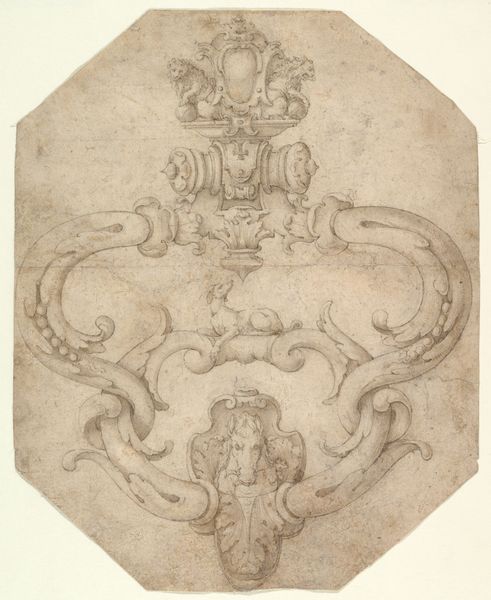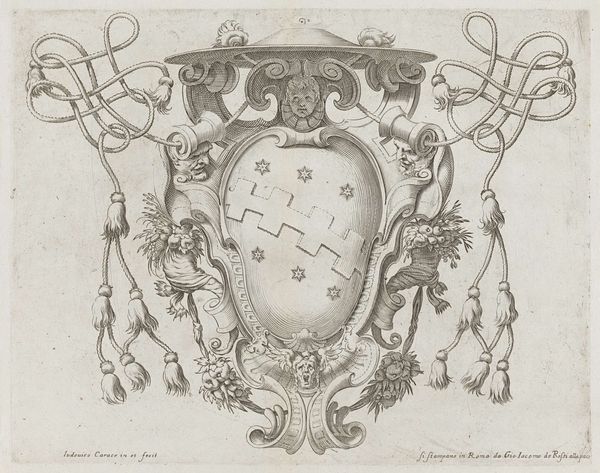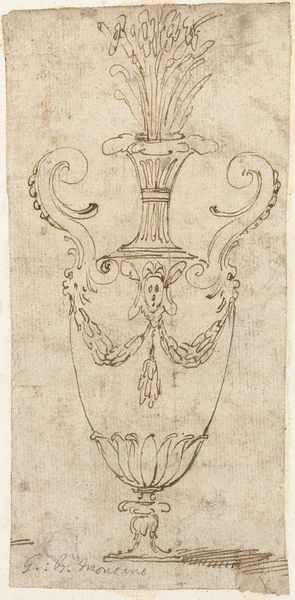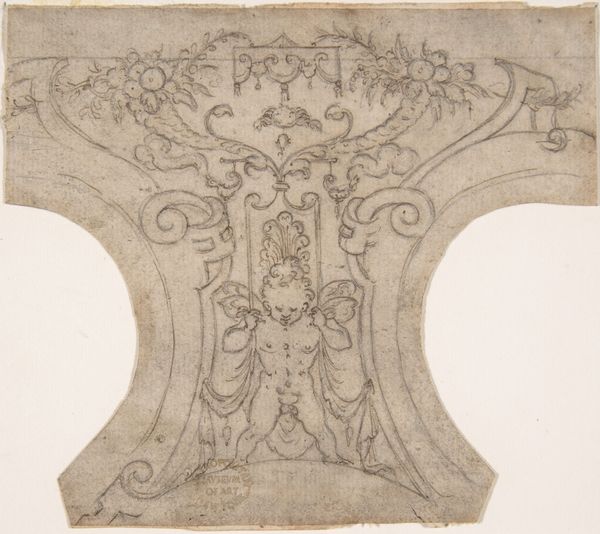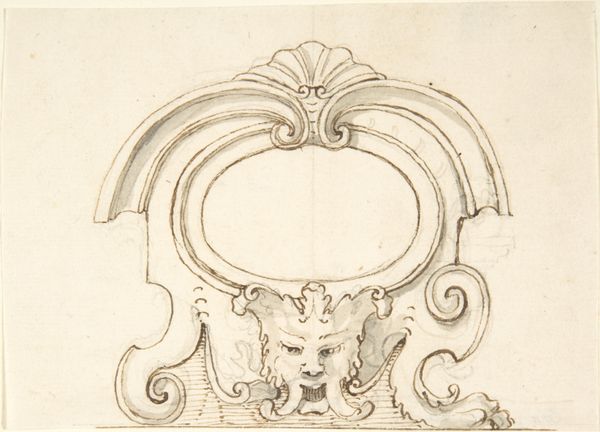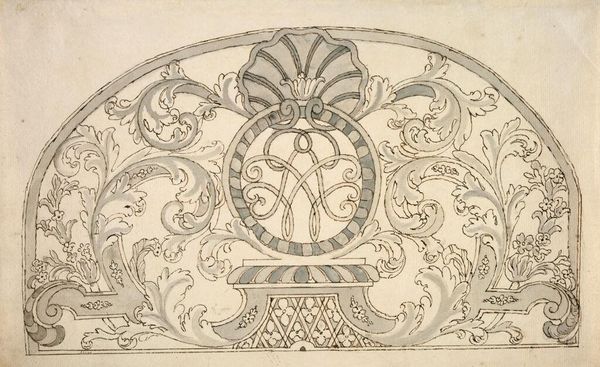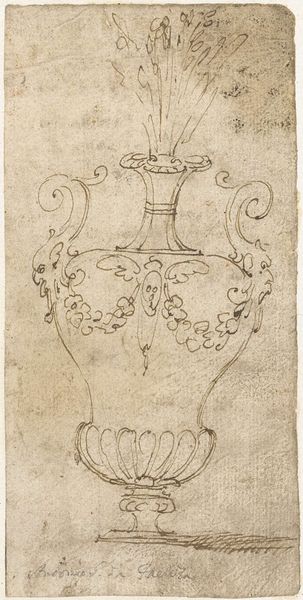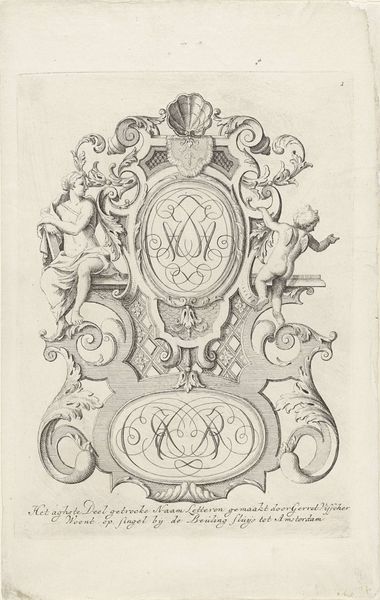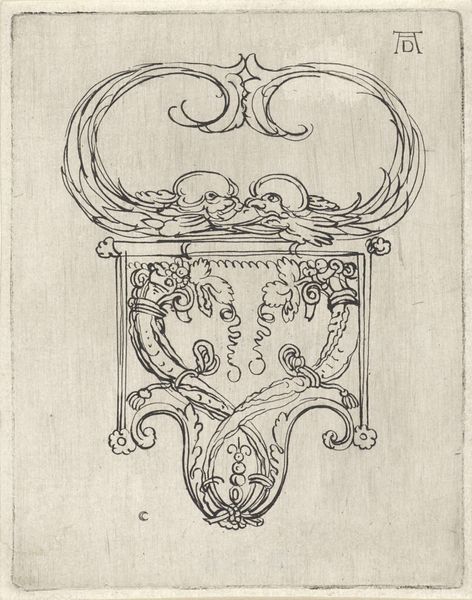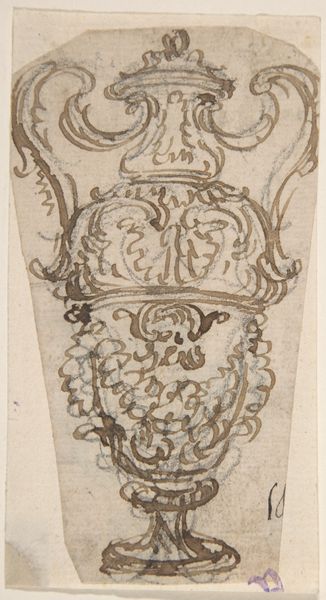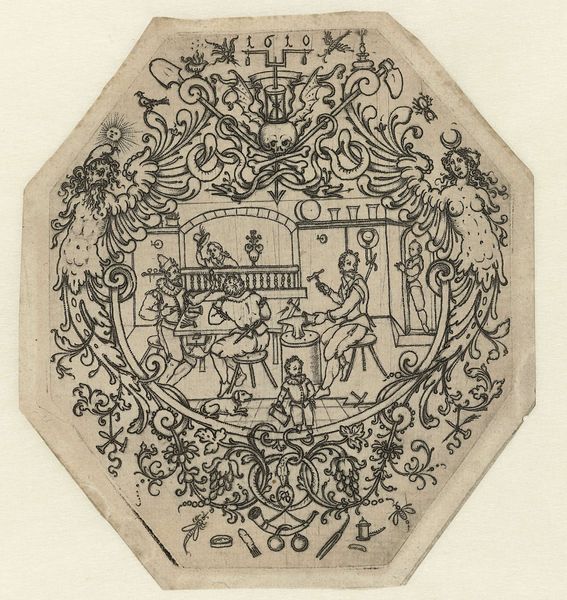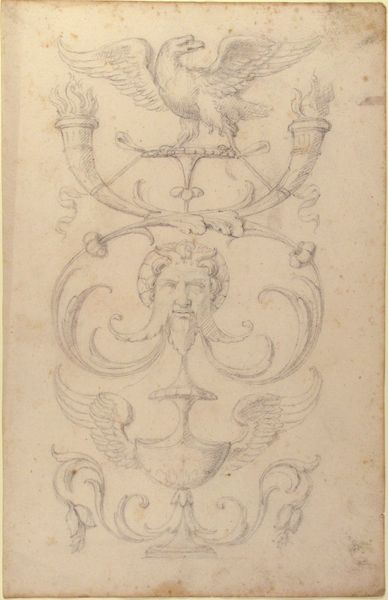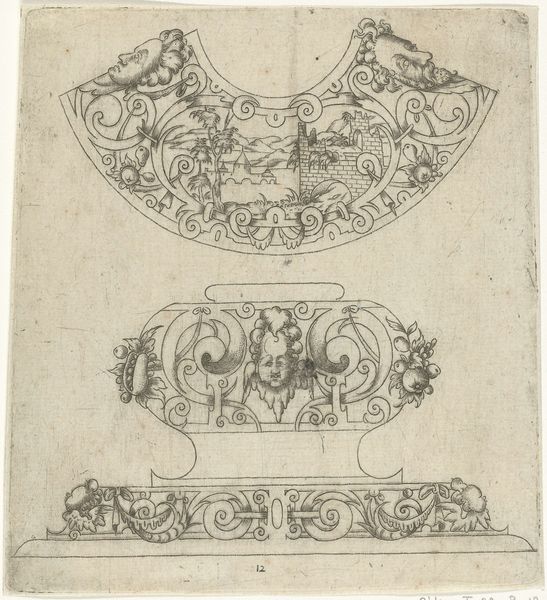
Medici Coat of Arms on top of a Window of Door Frame 1652 - 1725
0:00
0:00
drawing, print, paper, ink
#
drawing
#
baroque
# print
#
paper
#
form
#
ink
#
geometric
#
line
#
italian-renaissance
Dimensions: sheet: 2 1/8 x 2 1/2 in. (5.4 x 6.3 cm)
Copyright: Public Domain
Editor: Here we have Giovanni Battista Foggini's "Medici Coat of Arms on top of a Window of Door Frame," created sometime between 1652 and 1725, using ink on paper. It's a fairly simple sketch, quite linear. What stands out to you when you look at it? Curator: I'm drawn to the materiality of the piece itself – the paper, the ink. What kind of labor went into creating the paper? Was it mass-produced, or hand-crafted? Understanding the economic value of the materials used reveals the patron's status. Consider the labor in grinding the pigments for the ink, how these elements relate to the larger societal context of production and consumption in Foggini's time. Does the precision or lack thereof indicate a specific workshop practice? Editor: That’s interesting; I hadn’t considered the paper itself as being significant. I suppose I was focused more on the design itself. Curator: Think about the act of reproducing this image. It's not just about the image but how that image gets disseminated. Was this print intended for a wider audience, perhaps as a means of promoting the Medici brand, or was it simply a record for the artist? The labor involved in creating multiple prints, the distribution networks... those are critical considerations. Editor: So, the print is more than just art; it is also part of a bigger economic picture, impacting production, dissemination, and labor. Curator: Precisely. This drawing becomes a tangible manifestation of social and economic relations. The ink, the paper, the printmaking process – they’re all intertwined with systems of power and commerce. The choice of material, its quality and how the design would be produced, indicates the intention, impacting audience perceptions. Editor: I'm beginning to see how examining the materials and means of production offers a really fascinating insight! It offers such a different perspective. Curator: It shifts the focus from purely aesthetic concerns to a deeper engagement with the socio-economic fabric in which the artwork was created. It’s like uncovering hidden histories embedded within the object itself.
Comments
No comments
Be the first to comment and join the conversation on the ultimate creative platform.
